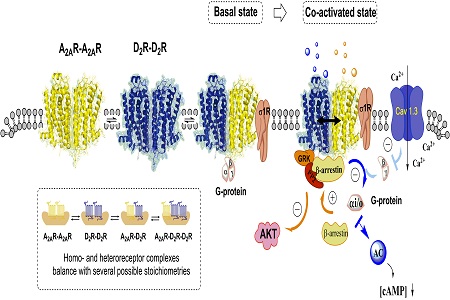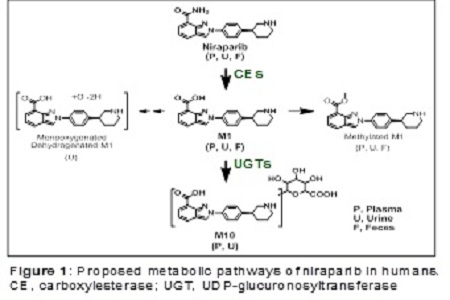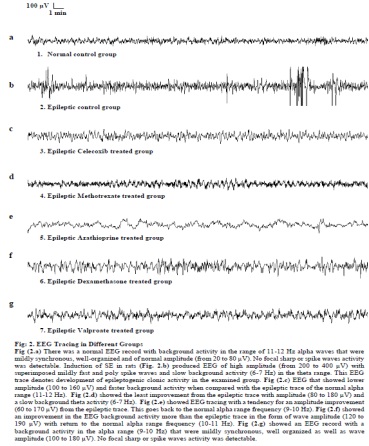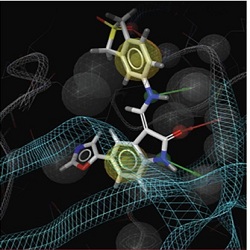Day 1 :
Keynote Forum
Kjell Fuxe
Karolinska Institute, Sweden
Keynote: Multiple D2 heteroreceptor complexes in the ventral striatum: Relevance for schizophrenia and cocaine use disorder and their treatments
Time : 10:05-10:45

Biography:
Kjell Fuxe has worked at Karolinska Institute, Sweden since 1960, became Prosektor in 1968 and Professor in 1979. He has been a Professor in the Department of Neuroscience since 2005. He published over 1589 papers. He is a member of Royal Swedish Academy of Sciences and foreign member of Mexican Academy of Sciences and was a member of the Nobel Assembly. He is mainly known for his work on central monoamine neurons, volume transmission and its different forms, receptor-receptor interactions in the CNS and neuropsychopharmacology.
Abstract:
Statement of the Problem: The discovery of allosteric receptor-receptor interactions in GPCR heteroreceptor complexes in the plasma membrane of nerve cells in the CNS gave a new dimension to brain integration, plasticity and neuropsychopharmacology. Aim of this study is to test the hypothesis that different types of D2 heteroreceptor complexes are new targets in the treatment of schizophrenia and cocaine use disorder. D2 receptors in the complexes can also interact with ion channel receptors, receptor tyrosine kinases and/or adapter proteins. Disturbances in the D2 complexes can contribute to schizophrenia development and cocaine use disorder through changes in the balance of the activity of diverse D2 homo-and heteroreceptor complexes of the ventral striatopallidal GABA anti-reward pathway regulating salience.
Methodology & Theoretical Orientation: Proximity ligation assays and biochemical binding techniques were used with behavioral correlates.
Findings: Agonist activation of A2A protomer in the A2A–D2 heteroreceptor complex inhibits D2 Gi/o mediated signaling but increases the D2 β-arrestin2 mediated signaling. Through this allosteric receptor–receptor interaction, the A2A agonist becomes a biased inhibitory modulator of the Gi/o mediated D2 signaling, which may be the main mechanism for its atypical antipsychotic properties. The dopamine (DA) and glutamate hypotheses of schizophrenia come together in the signal integration in D2–NMDAR and A2A–D2–mGluR5 heteroreceptor complexes, especially in the ventral striatum. Cocaine self-administration differentially affected allosteric A2A-D2receptor-receptor interactions in the ventral vs. the dorsal striatum.
Conclusion & Significance: Dysregulation of the meso-limbic DA neurons and their post junctional D2 heteroreceptor targets may be involved in producing the symptoms of schizophrenia. Potential differences in the composition and stoichiometry of the A2A-D2 heteroreceptor complexes, including differential recruitment of sigma 1 receptor, to the ventral vs. dorsal striatum may explain the selective antagonistic A2A-D2 receptor interactions observed after cocaine self-administration in nucleus accumbens explaining the anti-cocaine actions of A2A agonists.

Keynote Forum
Sanaa S Botros
Theodor Bilharz Research Institute, Egypt
Keynote: Potential antischistosomal activity of PDE inhibitors using in vitro Schistosoma mansoni worm killing
Time : 10:45-11:25

Biography:
Abstract:
Keynote Forum
Zhi-Yi Zhang
TESARO Inc., USA
Keynote: Pharmacokinetics of the poly (ADP-ribose) polymerase inhibitor (PARPi) niraparib
Time : 11:45-12:25

Biography:
Zhi-Yi Zhang is a Senior Director at TESARO Inc., an oncology-focused biopharmaceutical company in Waltham, MA, USA. He currently leads a group in Clinical Pharmacology and Drug Disposition supporting the development and regulatory submission of several drug candidates in the late phase of the Tesaro pipeline. Before joining TESARO, he worked at several other biopharmaceutical companies, leading efforts to characterize the absorption, distribution, metabolism, and elimination and drug-drug interactions of small molecule drug leads and candidates at Eisai Inc., and CombinatoRx Inc. He received his Medical degree at Fudan University Medical School, China; MS in Department of Environmental Sciences at Rutgers University, USA, and his PhD in Department of Environmental Health and Toxicology at State University of New York at Albany, USA. He completed his Post-doctoral training in Toxicology Division, Department of Chemistry, Massachusetts Institute of Technology, USA.
Abstract:
Statement of the Problem: Niraparib (ZEJULA™) is a highly selective inhibitor of PARP1&2, approved for the maintenance treatment of adult patients with recurrent epithelial ovarian, fallopian tube, or primary peritoneal cancer who are in a complete or partial response to platinum-based chemotherapy. Here, we present the pharmacokinetic profile of niraparib.
Methodology & Theoretical Orientation: The pharmacokinetics and disposition of niraparib were comprehensively evaluated in preclinical in vitro and in vivo experiments and in three clinical studies aimed at characterizing its absorption, distribution, metabolism, and elimination.
Findings: Niraparib was highly bioavailable (F≈73%) with dose-proportional exposure (30–400 mg) and a consistent accumulation ratio (R≈2) following multiple daily doses in patients. The Vd/F of niraparib was 1220 L in cancer patients, indicating extensive tissue distribution. This was consistent with niraparib’s distribution to rat brain, monkey cerebrospinal fluid, and xenographic tumors, and with its high permeability coefficient (Papp=12–18×106 cm/s) in cultured cells. The primary metabolic pathway via the liver (carboxylesterase-catalyzed amide hydrolysis) led to the formation of an inactive acid metabolite (M1), which is subjected to glucuronidation. Cytochrome P450 enzymes played a negligible role in niraparib metabolism in patients. Niraparib was comparably eliminated via the renal and fecal routes, and exhibited a long terminal half-life (≈2 days), supporting a daily dose regimen. The high recovery of niraparib and its metabolites (86%), accumulating within 21 days in the excreta of patients, suggests minimal long-term body retention.
Conclusion & Significance: Niraparib’s ADME, characterized by high cell permeability and extensive tissue distribution, is consistent with its demonstrated anticancer activity.

- CardiovascularPharmacology|Ethnopharmacology|Immunopharmacology|Pharmacogenetics and PharmacogenomicsAdvances in Pharmacological Research
Location: Amphi Theater

Chair
Zhi-Yi Zhang
TESARO, Inc., USA

Co-Chair
Sanaa S Botros
Theodor Bilharz Research Institute, Egypt
Session Introduction
Layla Borham
Cairo University, Saudi Arabia
Title: The effect of some immunomodulatory and anti-infl ammatory drugs on Li-pilocarpine-induced epileptic disorders in wistar rats
Time : 12:30-13:00

Biography:
Layla Borham is a Professor of Clinical Pharmacology at Cairo University. She received her MSc and MD degrees at Cairo University Medical School. She has been working in Faculty of Medicine, Umm AlQura University, KSA for 15 years. During this period, she carried out a lot of scientific and social serving activities through her publications, scientific committee memberships, lectures and administrative work. She is a member in many committees in and outside the university. She is a Reviewer of Current Rheumatology Journal, and Associate Editor of Umm AlQura Medical Journal and Clinical Pharmacology and Translational Medicine Journal. She works in teaching hospitals as a Clinical Pharmacology Consultant. In addition, she works in the Ministry of Health hospitals and primary health care centres giving awareness lectures to health care providers and patients. She has been awarded a golden prize from Umm AlQura University for her overall services at the university.
Abstract:

Reham F Barghash
National Research Center, Egypt
Title: Current topics in computer-aided drug design technologies: Future aspects

Biography:
Abstract:

Mohammed Al Mohaini
King Saud bin Abdulaziz University for Health Sciences, Saudi Arabia
Title: Non-homologous end joining of complex DNA double-strand breaks with proximal thymine glycol and interplay with base excision repair
Time : 14:20-14:50

Biography:
Mohammed Al Mohaini is an Assistant Professor of Pharmacology at KSAU-HS, Saudi Arabia. His research interest is on “The effect of cancer chemotherapeutic drugs on the DNA especially the repair of DNA double-strand breaks induced by these compounds”.
Abstract:
MarÃa Esperanza Avella Vargas
Military University of New Granada, Columbia
Title: Cardiovascular effects of Calea prunifolia H.B.K. in wistar rats

Biography:
María Esperanza Avella Vargas is a Professor of Pharmacology and Therapeutics in Medical and Surgical Clinic Area of the Faculty of Medicine at Military University of Nueva Granada. She is the leader of the research group-Pharmacology, Toxicology and Therapeutics-UMNG and responsible for the research seminar-study of preclinical and clinical research of medicines for its development and application. As PhD student, he belongs to the research group i.e., Search for bioactive principles in Colombian medicinal plants of the Department of Pharmacy of the Faculty of Sciences, National University of Colombia in the city of Bogotá.
Abstract:
Aim: Calea prunifolia HBK (Cp) has been traditionally used in Colombia as a medicinal plant known as carrasposa. It is attributed properties such as arterial hypotensive, antipruritic, antipyretic and anti-seborrheic. The aim of the study was to investigate the cardiovascular effect, based on the evaluation of blood pressure.
Materials & Methods: A specimen of Calea prunifolia HBK was identified and deposited in the Colombian National Herbarium of the Institute of Natural Sciences of the National University of Colombia. Leaf extract, aqueous extract (EACp), ethanolic extract (EECp), and fractions, such as the butanolic fraction (FBCp), were obtained. It was examined in isolated aorta and isolated vas deferens, as well as changes in blood pressure with chronic oral administration of the extracts and the fraction to normotensive Wistar rats and rats Wistar with hypertension induced by L-NAME. Th e evaluation was also performed with acute intraperitoneal administration of extracts and fraction to normotensive Wistar anesthetized rats and acute intravenous administration of the fraction. In addition, the activity of the angiotensin converting enzyme in plasma and cytosolic calcium was measured in cardiomyocytes and uterine cells.
Results: Chronic administration by oral route does not demonstrate a hypotensive effect between the different experimental groups. Acute intraperitoneal administration showed a significant decrease in blood pressure and heart rate of ECP. FBCp lowers blood pressure in anesthetized rats in a dose-dependent manner, evaluated at a range of 1-100 mg/kg, i.v. Cp did not aff ect the plasma activity of the angiotensin converting enzyme or cytosolic calcium in cardiomyocytes and uterine cells. But Cp relaxes the smooth muscle and changes the vascular tone favoring the decrease of the blood pressure in rats by mechanisms related to the alpha-adrenergic inhibition.
Conclusions: In this study, the hypotensive property traditionally attributed to Calea prunifolia HBK was not tested with the in vivo experimental models of chronic oral administration, considering that traditional use is through infusions of oral administration. There is difference with the positive effect on the isolated organ assays of aorta ring and vas deferens. These results, added to the effect demonstrated by the intravenous and intraperitoneal injectable parenteral administration, where the hypotensive effect is associated to a cardiopresor effect, which leaves other questions and opens a new way to continue in the study and knowledge of this plant.

Biography:
Vasiliki Daikopoulou has her expertise in Organic and Synthetic Chemistry. She has completed her Bachelor degree in Chemistry at Aristotle University of Thessaloniki and Master’s degree in Organic Synthesis and Natural Products at the same institute. She is currently working in R&D Department of R.G.C.C. S.A
Abstract:
A considerable number of substituted adenines have been reported to act as agonists or antagonists for several receptors and enzymes. They interact with adenosine receptors, which are found to be upregulated in various tumor cells. In order to enhance their medicinal properties, we decided to add a substituent with an equally significant biological activity. Quinazoline are organic compounds consisting of two fused six-membered aromatic rings, a benzene ring and a pyrimidine ring. Their own substituted derivatives are being synthesized constantly for medicinal purposes such as anticancer agents. Over the years, medicinal chemists have synthesized a variety of quinazoline derivatives by inserting various active groups to the quinazoline moiety using developing synthetic methods. Taking into consideration the above, we have created a pathway for the conjugation of these two molecules (adenine and quinazoline). The purpose of this study is to synthesize 9-(4-methoxyquinazolin-2-yl)-9H-purin-6-amine as a precursor of a final structure. Both 2-adenine-4-methoxy quinazoline and final compound are going to be studied for their possible biological and medicinal activity. The conjugation of adenine with 2-chloro-4-methoxy quinazoline is achieved by using a strong base and silica gel in high temperature via regioselective N-arylation via nucleophilic aromatic substitution (SNAr).

Heba Abdel-Hady
Theodor Bilharz Research Institute, Egypt
Title: Characterization and evaluation of antioxidant activity of Ocimum canum leaves and its effeciency on Schistosoma mansoni larval stage

Biography:
Heba Abdel Hady is a Researcher of Medicinal Chemistry at Theodor Bilharz Research Institute (TBRI). She completed her BSc at Al-Azhar University; MSc and PhD in Biological Application of Natural Products. She carried out her research work on “Isolation and purification of the different classes of natural products which isolated from medicinal plants”. She has served as Editorial Board Member and Reviewer in some journals.
Abstract:
Schistosomiasis is the most endemic disease caused by trematode worm of the genus Schistosoma. Its control is dependent on kill the worm itself or one of its larval stages. The objective of this study is determination of the total phenolic and flavonoid contents, evaluating the scavenging inhibitory effect of Ocimum canum leaf methanol extract on DPPH (2,2-diphenyl-1-picrylhydrazyl) and ABTS as well as investigating the efficiency of plant extract against larval stages of Schistosoma mansoni. Also, chemical composition of plant extract was identified by GC-MS analysis. Antioxidant activity of the plant extract was evaluated by DPPH and ABTS scavenging assays while, cercaricidal and miracidicidal activity of it were tested at different concentrations directly on the larval stages for 2 hours, dead larvae were recorded each 30 minutes. The results revealed that Ocimum canum leaf methanol extract showed high total phenolic (321.78±0.69 mg GAE/g extract) and flavonoid contents (71.64±10.66 mg RE/g extract). Furthermore, there is a significant correlation between the concentration of the extract and the inhibition percentage of the free radicals. The higher inhibition percentage of plant extract was recorded by DPPH than ABTS at 500 µg/ml (84% and 62%) respectively; also, IC50 of DPPH and ABTS (26.41±1.39 and 194.45±2.03) respectively. Regarding to cercaricidal and miracidicidal activity, the plant extract showed larvicidal activity as it killed 82% of cercariae while, it was completely lethal to miracidia at 500 ppm within 2 hours. On the other hand, 36 chemical compounds were identified from plant extract. The main components are phytol (23%), hexadecanoic acid, methyl ester (15.48%), 9,12,15-Octadecatrienoic acid methyl ester (14.99%), n-Hexadecanoic acid (7.62%), 9,12,15-Octadecatrienoic acid (5.04%), ethyl linoleate (3.58%) and 2-propenoic acid, 3-phenyl-, methyl ester (3.17%). This study suggested that Ocimum canum can be used as cercaricidal and miracidicidal promising plant to control schistosomiasis disease as well as its potential use as antioxidant plant.

Biography:
Shaibu O Bello is the Dean of Faculty of Basic Medical Sciences, UDUS, Sokoto, Nigeria and has his expertise in pharmacology & Therapeutics. His passion is on population health as regards to adverse drug reaction and population pharmacokinetics especially in developing economies. He is also a trained Obstetrician where he again focuses on Obstetric pharmacology especially the effect of drugs on the feto-maternal duet. This is particularly important because, for ethical reasons, drugs are virtually not evaluated on fetus and mothers during development. He has contributed immensely to this field.
Abstract:
Statement of the Problem: Drug choice and dose management are often tailored towards minimizing unwanted drug effects. Prescription writing also involves careful education of the patients on possible adverse effects, flags and what to do. In Africa, probably due to high level of health illiteracy, such information may be considered alarmist and undesirable by most patients. Meanwhile, most patient translates self-identifiable changes in the body as evidence of haven taken a ‘good’ drug. This study was designed to establish the extent of such unusual attitude to adverse drug effects in Northwestern Nigeria.
Methodology & Theoretical Orientation: Questionnaire was designed using the modified Delphi protocol and validated. After ethical approval, multi-staged, cluster sampling technique was used to select local government regions, districts, and households for interviews. Only adults (>18yrs) who consented were interviewed. The domains of interest were demographics, expectations from drug treatments, knowledge, and attitudes towards common adverse effects of drugs.
Findings: Two hundred and thirty-five (235) persons were interviewed. Male female ratio was 7:3. Eighty three percent (83%) had no education beyond primary school level, while 53.4 percent has no western education at all. Seventy-eight percentage frequently combines orthodox and herbal medicine in any illness. Sixty percent would rather classify herbal agents as ‘strong’ rather than just ‘effective’. Forty three percent strongly believed that at least one of the following were evidence of potency of any orthodox drug: pain at injection site, dizzy spells, occasional vomiting, elation, stinging taste, bitter taste. Sixty seven percent of respondents were highly unlikely to complete more than 2 days’ dose of drugs that had no self-identifiable effect to suggest potency.
Conclusion & Significance: There appear to be high rate of health illiteracy in the studied population about adverse drug effects. This may have been due to translation from experiences with herbal agents. Such patients’ expectations should be factored into counselling.
Savita D Patil
H. R. Patel Institute of Pharmaceutical Education and Research, India
Title: Anti-arthritic activity of marketed lauha bhasma

Biography:
Savita d Patil completed her M Pharm and PhD. Currently, she is a Vice Principal at H R Patel Institute of Pharmaceutical Education and Research, India. She has worked in various areas like CVS, antihypertensive and hypolipidemic activity of indigenous plants, anti-asthmatic activity of both synthetic compounds as well as plant extracts, hepatoprotective activity using animal models, CNS related preclinical screening. She has guided more than 50 students for PG and five students are perusing PhD under her guidance.
Abstract:
Ayurveda is the system of medicine which first recognized the importance of metals and minerals for curing ailments. Lauha bhasma is a one of the mineral based ayurvedic medicine mentioned in ayurvedic classics indicated for sotha (inflammation) and sula (pain). Current study planned to provide scientific support to such folk claims. In current study marketed lauha bhasma was characterized using modern analytical techniques like SEM, EDAX and XRD. Pharmacological assessment of lauha bhasma at three different doses was carried out in Freund's Complete Adjuvant (FCA) induced arthritis administered at 0.1 ml dose in hind paw of rats which was evaluated by various parameters such as paw volume at 7,14, 21, 28 day, hematological (RBC, WBC, HB, ESR count), CRP and RF levels. On 28 day, rats were sacrificed & histopathology was done. We found that treatment with all three doses of lauha bhasma alters various hematological parameters, CRP and RF levels compared to control group. Even this alteration has also seen at histopathological studies. These alterations significantly found to be highest at increasing doses of selected bhasma. Thus, our results justifies folk claim about lauha bhasma as an anti-inflammatory drug.






